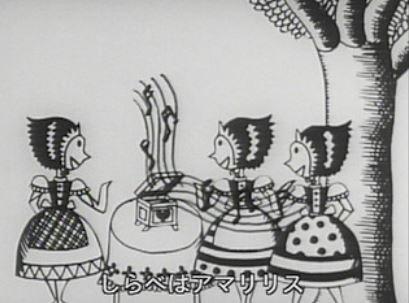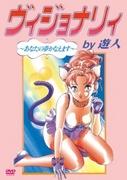"How did leopards get their spots?": A thorough analysis of their origins and appeal

"How Did the Leopard Get Its Spots?": A work that will shape the history of animationProduced by Yokohama Cinema Shokai on January 1, 1929, "How Did the Leopard Get His Spots?" is a work that symbolizes the dawn of animation, and its historical value is immeasurable. This work was created at a time when animation was still being explored as a new means of expression, and it had a major impact on later animation culture. Below, we will explore the detailed information and evaluation of this work, as well as its appeal from various angles. Overview"How Did the Leopard Get Its Spots?" is an animated work written and adapted by Chuzo Aochi, with illustrations by Yasuji Murata. The release media is listed as "other," while the original media is listed as "original anime," suggesting that this work was an attempt to create a new story. It only has one episode, and while it's short, it's packed with dense content. Background and historical significanceThe 1920s was a time when movies and animation began to develop rapidly in Japan. Many animation artists were already active before the appearance of Tezuka Osamu, and one of them, "How Did the Leopard Get Its Spots?", is particularly noteworthy. This work was produced by Yokohama Cinema Shokai, a production company that was advanced for the time. Yokohama Cinema Shokai was known for its focus on producing movies and animations, and this work is considered to be one of the pinnacles of their success. Chuzo Aochi was responsible for the original story and adaptation, laying the framework for the story. His creativity and imagination have given this work a unique worldview and the power to draw the viewer in. Meanwhile, Yasuji Murata's drawings, with a precision and beauty that exceeds the technical standards of the time, visually answer the question of how the leopard's stripes came about. Their collaboration helped to expand the possibilities of animation. Story and ThemesThe story of "How Did a Leopard Get Its Spots" begins with the question of how a leopard's spots come about. Through this question, the reader is prompted to contemplate the mysteries of the natural world and the origins of life. The story begins with a leopard wondering about his spots, and then goes on a journey in search of the answer. During this journey, the leopard encounters various animals and natural phenomena, and begins to reaffirm the meaning of his own existence. The themes include self-exploration and respect for nature. The Leopard's Journey is a journey to find the meaning of one's own existence, while at the same time depicting the beauty and harshness of the natural world. This theme can be said to reflect the social situation and people's state of mind at the time. In Japan in the 1920s, free thought was spreading under the influence of Taisho democracy, but there were also natural disasters and economic instability. In such an environment, this work is thought to have given people hope and courage. Visual expression and technologyThe visual expression of "How did the leopard get its spots?" exceeded the technical standards of the time. Yasuji Murata's drawings are meticulous and beautiful, paying close attention to detail, and realistically depict the leopard's movements and the natural scenery. In particular, the scene that visually shows how the leopard's spots are formed leaves a strong visual impact and leaves a deep impression. This work also marked a technological advancement in animation. At a time when hand-drawn animation was the norm, the film's use of color and movement was ingenious, maximizing visual appeal. In particular, the fluidity and realism shown in the depiction of natural landscapes and animal movements had a major influence on later animated works. Evaluation and impact"How Did the Leopard Get Its Spots" was not only highly praised by viewers at the time, but also had a major influence on later animation works. This work proved that animation was not just entertainment, but could also be a means of artistic expression. In addition, the story, which explored the mysteries of the natural world and the origins of life, deeply moved and inspired viewers to think, and was loved by many people. In particular, later animation creators such as Tezuka Osamu and Miyazaki Hayao are said to have been greatly influenced by this work. Tezuka Osamu frequently takes up themes of nature and life in his own works, and the influence of "How Did the Leopard Get Its Spots?" can be seen at the origin of this. Miyazaki Hayao's works also feature themes of respect for nature and self-exploration, and the influence of this work can also be seen. Recommendations and how to watch"The Leopard's Spots" is an essential work for understanding the history of animation, and is highly recommended for modern audiences as well. This work is a rare combination of visual beauty and deep themes. It is a must-see, especially for those who are interested in the origins of nature and life, and for those who enjoy stories that depict journeys of self-discovery. Currently, it is possible to watch it on DVD or through online distribution services. It is also sometimes shown in movie theaters and at animation events, so it is a good idea to take advantage of these opportunities. In addition, many books and papers about this work have been published, which can be used as reference material to gain a deeper understanding. summary"How Did the Leopard Get Its Spots?" is a work that colors the history of animation, and its value still shines today. The collaboration between Chuzo Aochi's original story and screenplay and Yasuji Murata's illustrations has expanded the possibilities of animation, deeply moving and inspiring viewers. This work is a rare combination of a story about the mysteries of the natural world and the origins of life, and meticulous, beautiful visual expression. It is an essential work for understanding the history of animation, and is highly recommended for modern viewers as well. |
<<: Review of "Tadayoshi Has Returned": A moving reunion and deep human drama
Recommend
The first photo of the film "The Flash" was released on the set, and the Latino super girl appeared
The filming of "The Flash" starring Ezr...
SOL BIANCA review: The appeal of space adventure and the depth of characters
SOL BIANCA - Sol Bianca - Comprehensive evaluatio...
"Top Gun 2" surpassed $700 million in North American box office, surpassing Black Panther to become the fifth in film history
The box office of "Top Gun 2" is soarin...
Fairy Tale Manga Calendar: Ratings and recommendations for fascinating stories and beautiful illustrations
The appeal and evaluation of "Fairy Tale Man...
Zhang Hanyu will star in Huayi's new film "Railway Guerrillas 1939" to start shooting in December
Today (September 28), "Railway Guerrillas 19...
The appeal and evaluation of Bungo Stray Dogs Season 3: Developments that exceed expectations and deepening of characters
Bungo Stray Dogs Season 3 Review and Recommendati...
The filming scene of the movie adaptation of "Five Nights at Freddy's 2" was allegedly leaked
"Five Nights at Freddy's", co-produ...
Planet of the Apes begins filming in Australia, to be released in North America in 2024
Recently, the sci-fi movie "Kingdom of the P...
New trailer for the movie "Lilo & Stitch" will be released in North America on May 23
Today (December 19), Disney released a new traile...
Yuji Naka said that baby Sonic is cute but it's still weird that his eyes aren't connected
On December 27, the movie "Sonic the Hedgeho...
Marvel officially announced: Maguire and Garfield's two versions of Spider-Man officially joined the Marvel Cinematic Universe
With the release of the MCU movie "Spider-Ma...
"Tomb Raider" movie will have a sequel, and Camila Cabello will continue to play Lara Croft
According to Deadline, the production companies o...
Director Gunn's "Bio Commando" has received great reviews and its Rotten Tomatoes rating was 100%
The animated series "Bio Commando" dire...
World Destruction: Evaluating the fight to save the world
World Destruction: Six World Destroyers Review an...
007 producer: The next James Bond will still be a man
As we all know, "No Time to Die" is Dan...









